BACK TO WEATHER-BLOG MENU
New! Fine Art Prints & digital images for sale-
Welsh Weather & Dyfi Valley landscapes Slide-Library - Click HERE
It's October 17th and the best summer weather we have had since - well May, I would think -comes to an end later today as an active cold front (with a possible nasty squall-line developing along it) surges south-east to introduce much colder air - cold enough to see snow over the higher peaks of Snowdonia later in the week and more widespread hill-snow for parts of Scotland as an unstable NW to N airflow takes over for a bit. Thereafter, unsettled conditions look to continue through to the end of the month. Not quite the wintry Armageddon predicted in the Express and elsewhere - so far! All eyes are on later in November and through December as we ponder whether there will be another severe Northerly outbreak or two then. This is something of particular interest to me as there is research underway looking into the possibility that late-autumn circulation pattern changes caused by reduced Arctic sea ice have a knock-on effect in NW Europe in what is called the "Warm Arctic-Cold Continent" effect. I wrote at length about that in December 2010 and given sea-ice extent was second-lowest this season (2007 holding the observational record) I'll be watching developments (or lack of) with considerable interest.
Back to the now, though, as speculation about the weather two months hence is best done with a pint or two of beer. September 2011 began with a veritable bonanza of convective weather-photos when a multiple funnel-cloud/waterspout outbreak occurred off Borth. Just a fortnight later, the same venue delivered yet another stunner: it all began with this little storm breaking out just before sunset:
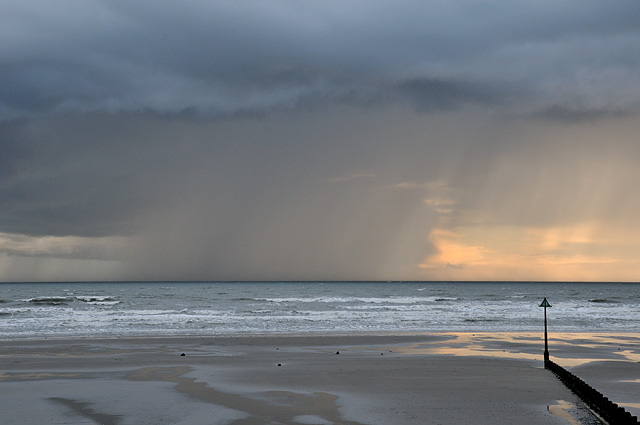
The ragged line of cloud near the top is the start of the storm's gust-front: a little later, with the sun having set a bit more too, things evolved magnificently:
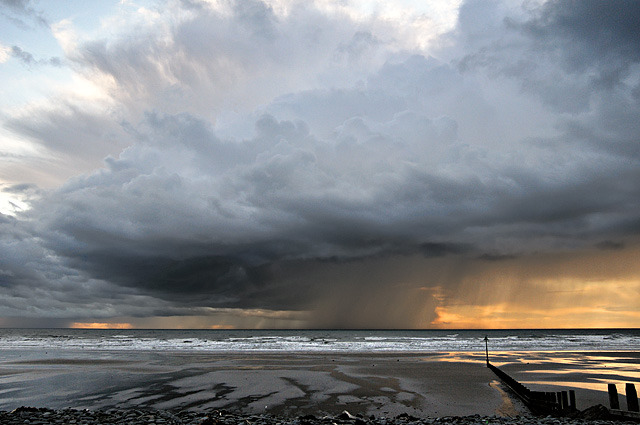
That has to be one of the most beautiful storms I have ever intercepted!
The show was far from over: as the curtain of rain advanced ESE towards my vantage point, the sun, obscured up to this point by a distant cumulonimbus, emerged at the same time as heavy rain began to fall. The effect was surreal:
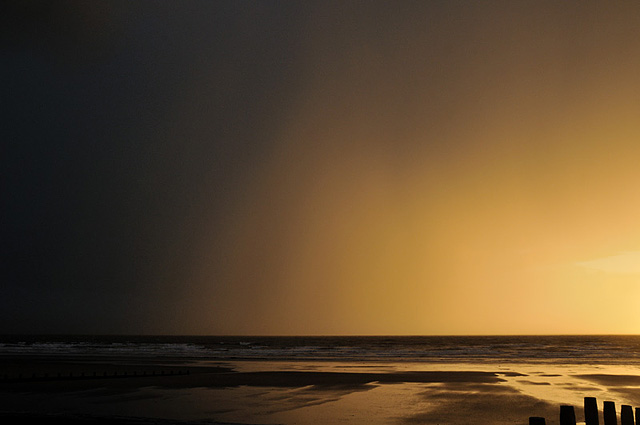
It's a safe bet that sunlight + rain = rainbow, so I turned around and there it was:
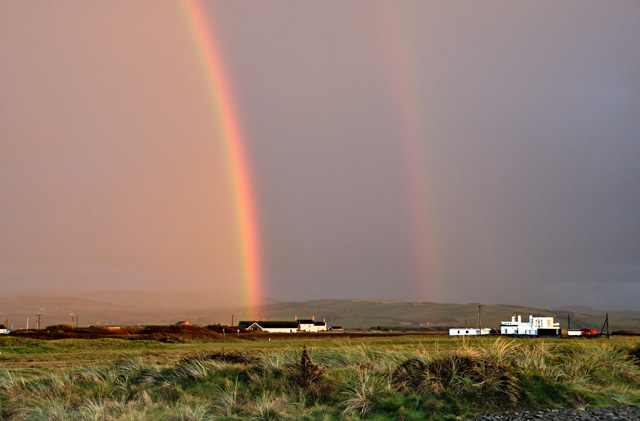
Ultrawide zoom-out, hence the slight distortion in the building L:

Drying-off the camera, I noted that sundown was now not far off and thought I'd wait and see if I could capture a "green-flash" - that sometimes happens just as it dips beneath the horizon. In the meantime, the rain-washed sand did its thing:

No green-flash on this occasion but there were some neat Kelvin-Helmholtz wave-clouds to compensate:

Later in September, warm sunny conditions developed: it did not take long for skies to turn hazy, which is no good for the photographer generally. On a trip to Penbryn beach, near Cardigan, with my folks on October 1st, I found the solution was to walk to the end of this sea-cave as soon as the tide had gone out enough (so only one set of footprints). I quite like this. We used to holiday hereabouts when I was very young and, with no torch to hand, I remember only venturing into this one so far, unsure as to what might be lurking in the darkness beyond. This time there were no such fears and - oh - it was winkles and limpets, young man!
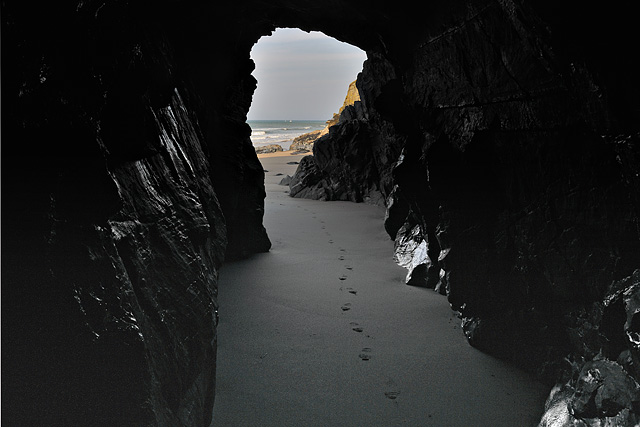
On the way back to Machynlleth on the same day I stopped to show my folks how Borth's artificial reef was coming on. Lots of people out enjoying the better-late-than-never warm sunshine....
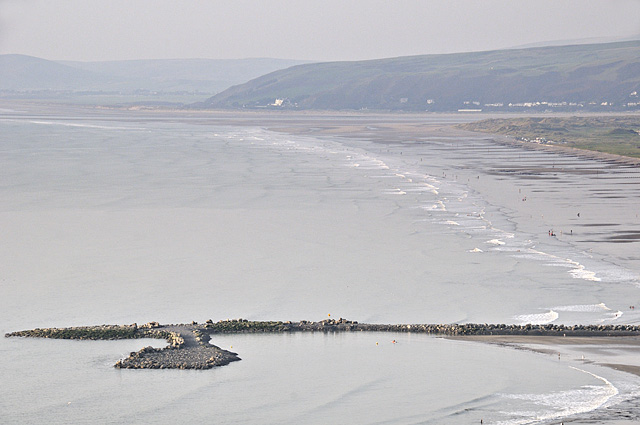
In mid-October 2010, this was the view down the valley of the Afon Wen in Coed y Brenin, with Cadair Idris in the background:
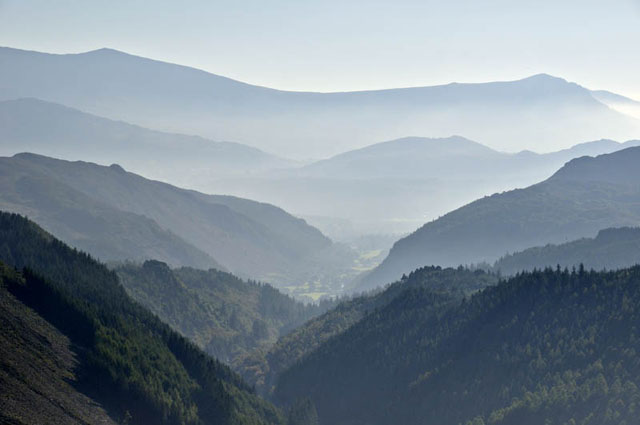
The same Cardiff University Earth Sciences field-trip was undertaken this year but what a difference:
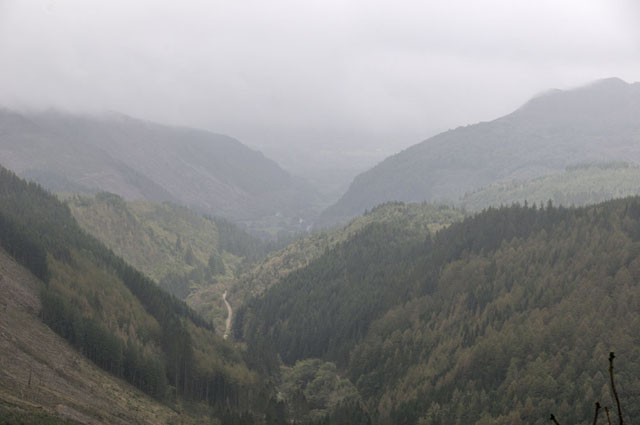
It didn't rain all the time - just most of the time! The students were great, working hard despite the weather. Here they are at a soggy exposure of the Coed y Brenin porphyry-copper orebody - a huge, low-grade dissemination of copper ores occurring through millions of tonnes of igneous rock that was explored then abandoned by Rio Tinto Zinc back in the late 1960s-early 1970s:
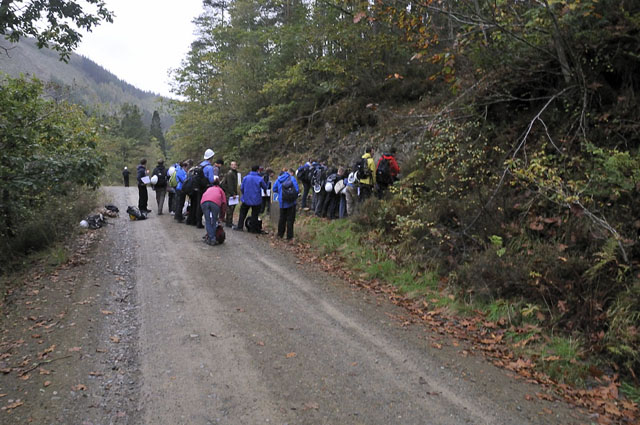
Here they are again, just north of Ferndale in the Mawddach Valley, where a new cutting neatly exposes Cambrian sedimentary rocks cut by igneous dykes and sills:
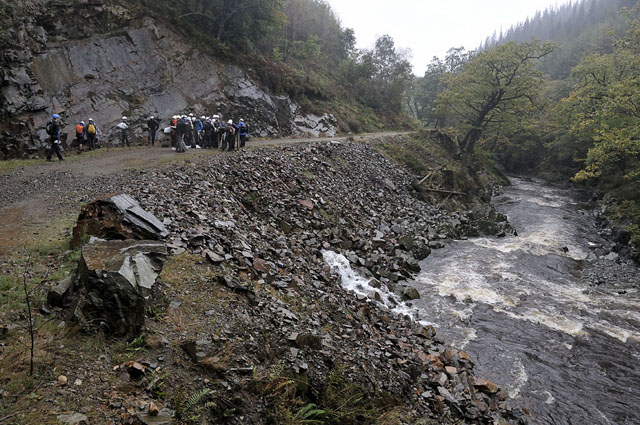
The walk back out to the bus took the party past the famous waterfalls of Pistyll Cain, in good form with all the rainfall:
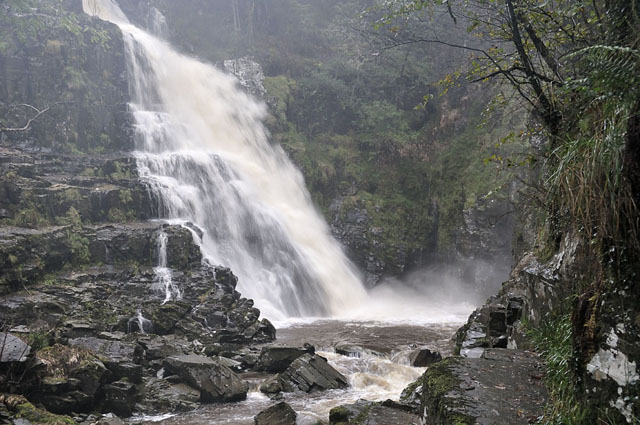
Coed y Brenin concluded, we headed north and as we left Snowdonia and reached the Menai Straits, the weather improved. One thing about topographically-induced rainfall in moist winds is that if you head to the lowlands you'll leave it behind! The destination was Anglesey and one of the most photogenic old mines anywhere - Parys Mountain. The mine worked copper, in the form of chalcopyrite, a copper-iron sulphide that occurs with lots of the iron sulphide, pyrite - the so-called "yellow-ore". Here's a block with lots of little cubic pyrite crystals - they threw the pyrite away on the tips so it's very easy to find:
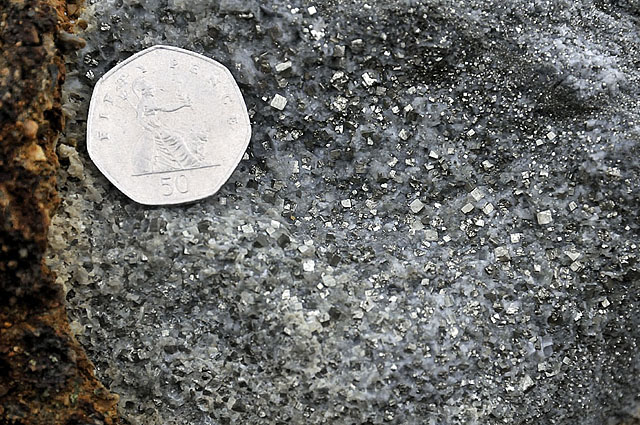
Less commonly, one comes across the so-called "blue-ore". This seriously dense rock consists of bands of very fine-grained sulphides of lead, zinc and copper with all sorts of obscure compounds of arsenic, bismuth etc present in trace amounts. Metallurgically complex, it too was mostly dumped by the old miners, but today it can be processed and the metals extracted, and the recent exploration has found interesting quantities of it underground and further along from the old, worked areas:
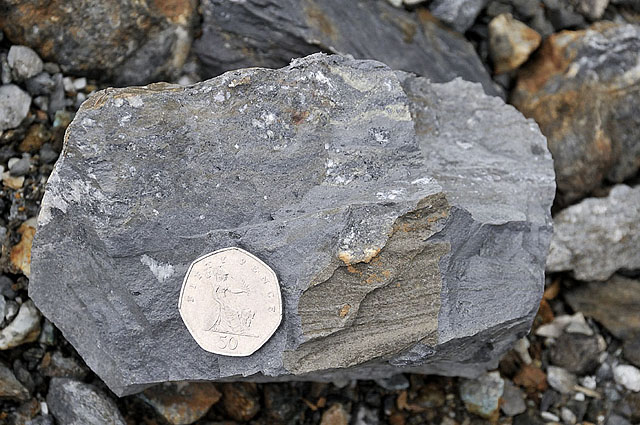
The deposit isn't a "lode" as such but the output of black-smokers (volcanic hot springs) on an ancient sea-bed - a chemical, metal-rich sediment if you like - millions of tonnes of it, a fair part of which has already been removed. Earth-movements later tilted the deposit to a steep angle, hence the steep-sided Great Opencast from which a tremendous amount of copper ore was extracted (below). The image also shows the very reddened ground, especially at the top of the opencast. Here, mobile iron has seeped in solution into the glacial boulder-clay that was dumped atop the deposit during the last ice-age. The iron precipitated out as red iron oxide and cemented the boulder-clay into a solid mass - in places so solid that it forms overhangs. The popular term for the state in which it has found itself is "ferrified".
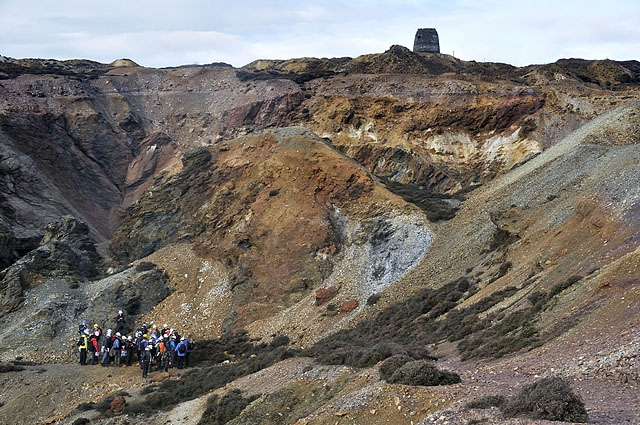
Further along, the path that runs around the site passes a viewpoint into the second big opencast, belonging to the Mona Mine - a rather older working (the two were at first worked separately, before a corporate merger). Again, the rusting and bleaching can be seen everywhere - the result of pyrite dissolving in rain-water - resulting in sulphuric acid which attacks everything else!
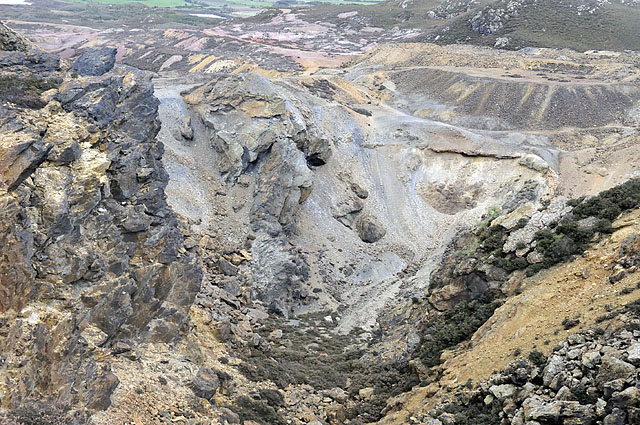
On the walk back in the early evening the lighting improved a little:
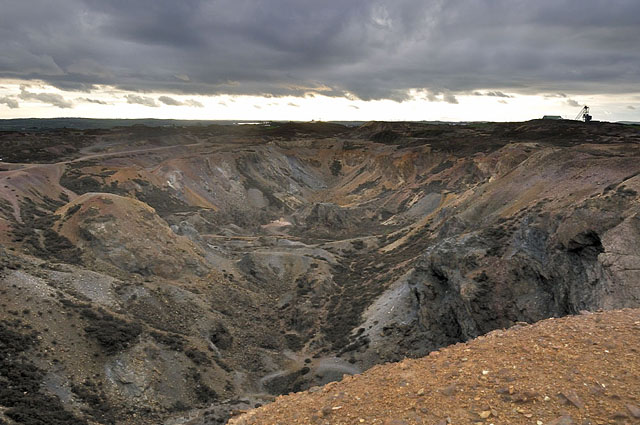
To the south, Snowdonia was visible in the distance. I liked the way that this shot depicts three industries - one old, one new and one forever!
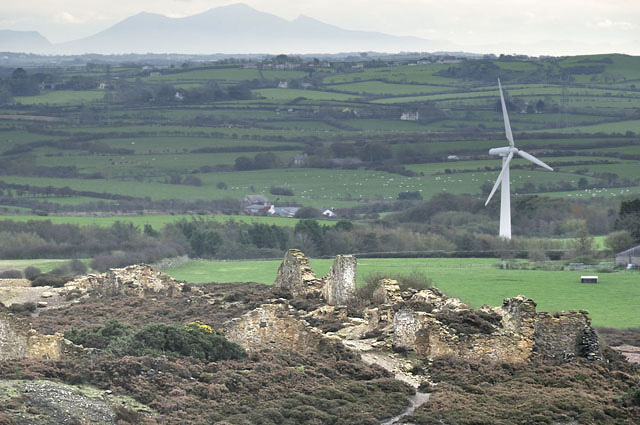
But this was the best shot of the entire trip. It was taken as the students were walking back to the bus along the path that runs along the northern side of the Great Opencast and then through the tips to the parking-area. Through a telephoto lens, the distant headframe of the Morris Shaft, sunk some 20 years back by Anglesey Mining, looms large. I underexposed the shot to silhouette out the foreground and here we are - it has a strange timeless quality about it:
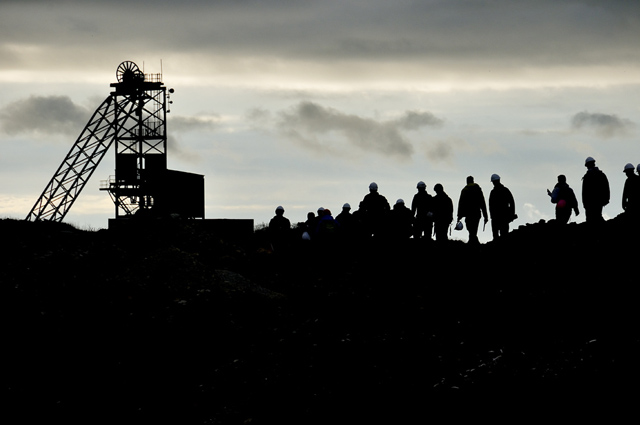
Next morning I had to get the Forestry keys back to the office in Dolgellau first thing, so thought I would get up and away early for a quick fungal foray (i.e. chanterelle-hunting). At 0700 this was the Western sky high above the Rhinogydd - appropriately enough the Hunter's Moon!
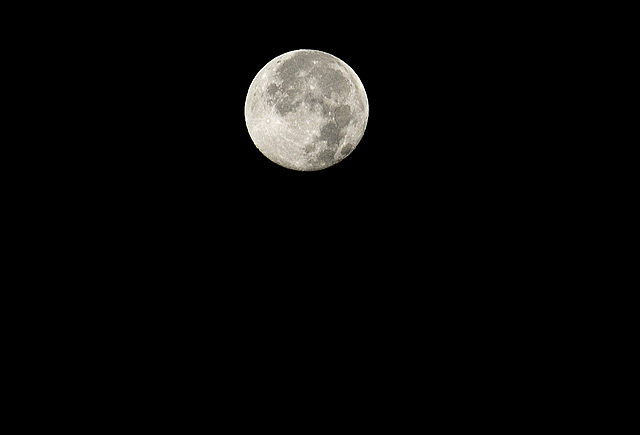
The trip finished down in Central Wales with visits to a couple of lead-zinc-silver mines: this is underground at Llywernog Mining Museum, where guided tours take visitors through the interesting old workings.
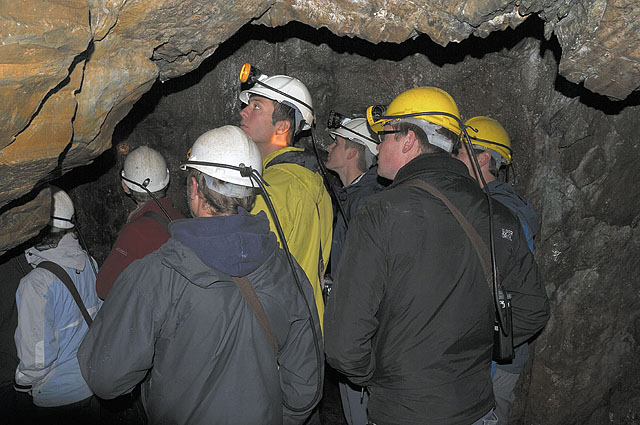
More sunshine (and mushrooms - these are Parasols) followed for the weekend...
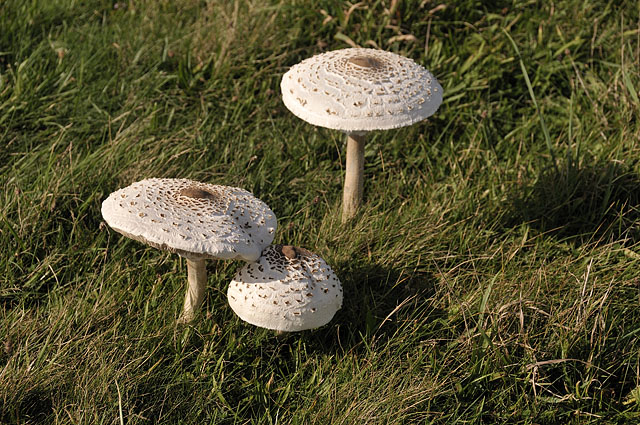
...but I think Autumn is very much upon us from now on More soon!
BACK TO WEATHER-BLOG MENU
New! Fine Art Prints & digital images for sale-
Welsh Weather & Dyfi Valley landscapes Slide-Library - Click HERE